Related page
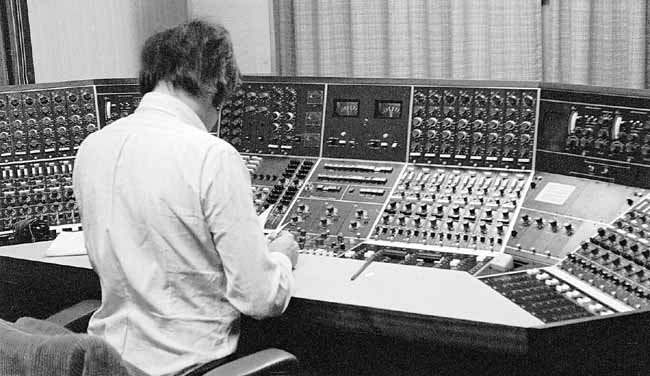
Related page
By contrast the monster, bought-in SSLs that succeeded it had the fashionable (and cheaper) "in line" layout, which rendered it impossible to control the channels at either end without shifting one's head away from the stereo axis. Another snag with the SSLs was that they provided no room for all-important control scores or scripts and parallax error was a constant hazard - it was all too easy to twiddle ancilliary controls of the wrong channels.
During the planning of this installation there was much debate about the orientation of the desk. Had it faced the window it would have prevented a view of the stage, so it was installed at 90 degrees, offering a sideways view. This seriously concerned some experts, as they feared one-sided reflections of the glass, but in practice this didn't prove a problem.
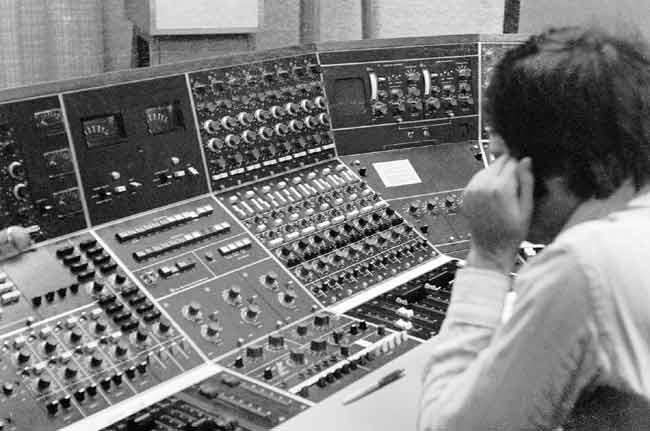
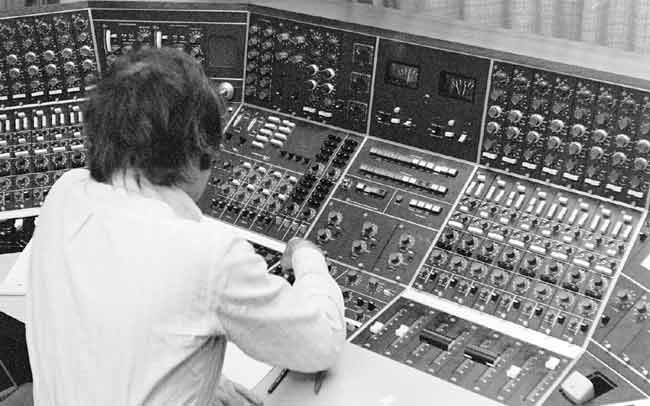
The Concert hall has a fine organ which could never be played because it could be heard throughout the studios in BH Tower. Despite being mute, it was lovingly maintained by an organ society, and probably continues to be so to this day!
Another incurable CH curse was rumble from the Bakerloo Line. Apart from such snags the CH was probably the best of the BBC's music studios, at least in London, and its conversion to the BBC Radio Theatre is a sad loss to the London musical scene.
When the Neve was first installed all the RSA (or EQ, for younger readers) control knobs were the same colour. I was instrumental in suggesting the knobs be fitted with coloured inserts and indeed in devising a colour scheme which held good for many years, including on the OB Calrec gear.
One of the most vivid memories I have of the Concert Hall's platform is of little dark brown 'worms' burned into the parquet by the discarded dog ends of the chain-smoking second fiddle in Grand Hotel. These were very useful as they showed the studio attendants exactly how to set up the platform for the programme!
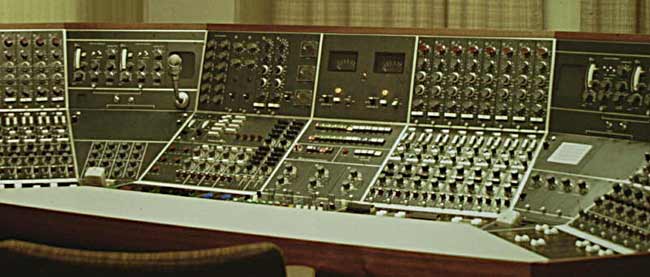
John Rushby-Smith's mention of Grand Hotel cues nicely to this memory from John Hale.
It was a Sunday evening in the Home Service Continuity, time for Grand Hotel, an hour long programme of light classical music. I was doing the usual pre-transmission checks with the Concert Hall. "Flicks and a steady", I said to the SM, as usual. (This is the way the Continuity operator signals a studio. First the studio's red light is flicked on and off 30 seconds or so before transmission. If the studio is ready the SM buzzes back, then a steady red is given when the Con fades up the studio.) 1900 came and the announcer went through the usual announcement ending, as always, with: "... the orchestra is already playing the signature tune so into the Palm Court of Grand Hotel".
I couldn't understand it: I listened to my cans on prefade as usual - nothing. No orchestra - and no expected music to fade into under the announcer! The announcement ended so I naturally gave the steady red light to the Concert Hall. Magic! The orchestra jumped into life and started playing the (never previously heard) first bars of their theme tune!
Unknown to me (I had never done this programme junction before) it was custom and practice for this transmission to give the Concert Hall an "early red" about a third of the way into the con announcement (with the con fader shut) to which the orchestra reacted, thus enabling the music to be 'tickled in' under the end of the con announcement. Realising the error I had made, I rang the SM, apologised, and requested that they somehow 'lost' the extra few seconds I had unwittingly cost them. They did, and the programme concluded perfectly, on time.
Grand Hotel started life in July 1925 when Albert Sandler and the Palm Court Orchestra broadcast from a real Grand Hotel - the one in Eastbourne. By the time of the above memories, the BH Concert Hall was the regular venue, suitably decorated with potted palms!
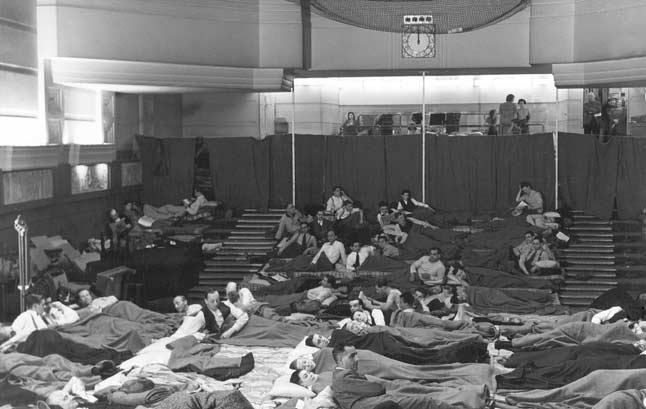
Finally, here's a photo showing the Concert Hall in October 1940, being used as a dormitory area. The seating has been removed and a curtain of blankets separates the mens' and womens' areas.

